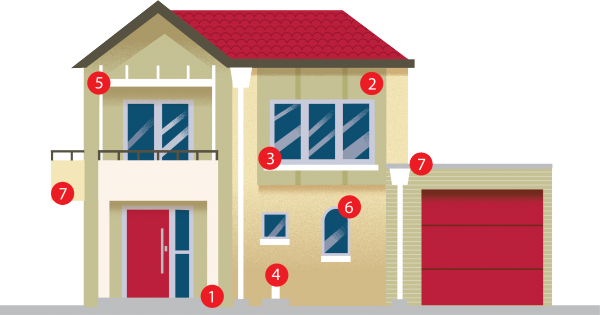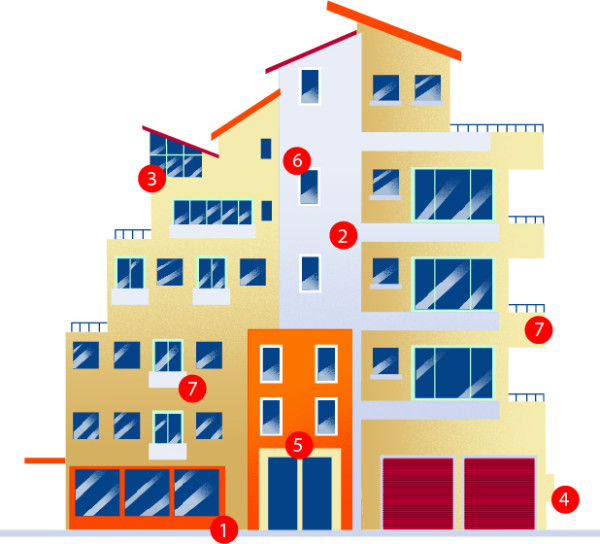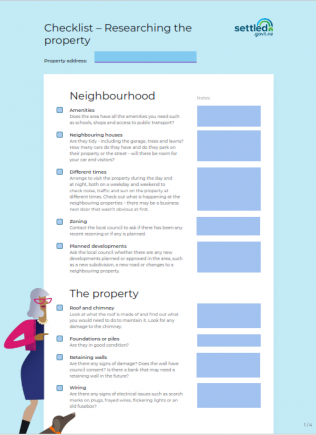Learning about leaky buildings
If the home you want to buy was built between the late 1980s and mid-2000s, there is a risk that it may be a leaky building. We use the term ‘leaky building’ because the problem is also found in apartments. These buildings can be very expensive to fix, so it’s important to get as much information as you can before you buy it.
Summary of important things to know
-
A leaky building is one where moisture gets between the outside of the house (the cladding) and the inside walls.
-
Buildings that have a high risk of leaking were mostly built between the late 1980s and the mid-2000s, using plaster-style monolithic cladding systems. The exterior walls typically have an unbroken or smooth appearance.
-
If you are interested in a house or apartment with cladding of this type, you should get an independent building inspection or a weather-tightness expert to inspect the property, because there may be no obvious signs of problems.
-
If you buy a property you know is leaky or has a high risk of becoming leaky, be aware of the risks to your health and the financial impact this may have.
-
This information on leaky buildings may not cover everything that is relevant to you or the property. You should always get advice from your own lawyer or conveyancer and other registered professionals.

What is a leaky building?
A leaky building is one where moisture gets between the exterior cladding of the house and the inside walls. If there’s no way for the water to drain out because of a lack of drainage and ventilation between the cladding and the framework, the water becomes trapped. The walls can potentially rot and dangerous fungus can grow, causing structural problems for the building and health problems for those who live there.
Houses identified as having a high risk of leaking are those built in the Mediterranean style (without eaves and with flat roofs), using monolithic cladding systems. They usually feature textured wall surfaces made out of plaster over polystyrene or fibre-cement sheet. Buildings built with this sort of cladding between the late 1980s and the mid-2000s need to be inspected thoroughly.
Unfortunately, other styles of buildings can suffer from weather-tightness issues if good building practices haven’t been followed or the materials used are defective. Make sure your checks are thorough.
If you choose to buy a property you know is leaky or has a high risk of becoming leaky, make sure you know exactly how much it is likely to cost to repair it and how long this might take.
Identifying weather-tightness issues
Often there are few obvious signs that a building is leaky, but there are a number of features, including the year when the building was built, that can indicate whether it is likely to suffer from leaks.
The numbers on these illustrations match the key risks described below.

Leaky home risks

Leaky apartment risks
Leaky building risks
- Ground clearance: Not enough space between the cladding and the ground, paving or deck or insufficient slope away from the edge of the building. The clearance to solid ground (concrete, asphalt, paving or decking timber) should be 150mm. The clearance to soil should be 225mm.
- Cracking in cladding: Look for hairline cracks in the cladding, typically found close to windows and doors, or discoloured cladding in these areas.
- Joinery: Check for cracks along the joinery seals between the joinery and the cladding.
- Penetrations or openings: Check all penetrations or openings in the cladding (for example, around pipes, vents or meter boxes) for gaps and lack of sealant. Also, check that meter boxes have appropriate flashing. Lack of flashing or reliance on sealant may allow water to penetrate.
- Pergolas: If a pergola frame penetrates or is directly fixed through the cladding, water may be able to seep inside.
- Windows: Check window flashings (thin pieces of waterproof material that direct water out and down, rather than into a building). Round or corner windows are difficult to flash, increasing the risk of water getting in.
- Enclosed balcony/cantilever deck: These can present a multitude of risks:
- A lack of slope on the balustrade.
- Hand railings attached through the plaster cladding.
- Poorly applied waterproof membrane.
- Insufficient drainage holes allowing water to pool after rain.
- Lack of clearance between the cladding and deck floor.
Inspecting buildings with potential weather-tightness problems
If you are interested in a property that has any of the features of a leaky building, you should get an independent building inspection. Some building inspectors specialise in weather-tightness issues. Ask the building inspector to look for signs of water damage or potential leaks. They can use a moisture meter to indicate moisture problems and water leaks without making holes in the walls.
Be aware that an inspection may not find all the defects. Ask the person doing the inspection to highlight the areas they couldn’t check and identify any risk areas that may need further investigation.
What to look out for
-
Outside
- Rust or other unusual staining on exterior walls.
- Any cracks in the cladding where rainwater could enter.
- Wall claddings should be clear of the ground and off balconies and decks to stop water soaking upwards.
- Decks should be set below internal floor levels.
- There shouldn’t be any garden directly against the cladding because it may stop water draining out of the cladding.
- There should be sheet metal or plastic flashings over windows and doors.
- Any dampness and rot around windows and doors.
- Parapet walls should have flashings covering their top surface.
- Any penetrations, such as pipes or wires, should be correctly flashed where they enter the roof or cladding.
- Any broken sealant.
-
Inside
- Any stains on ceilings.
- Spongy flooring or walls.
- Swollen or cracked skirting boards or architraves.
- Mould spots on interior walls.
- Floor coverings showing signs of water damage.
- Musty smells.
What you should ask the agent
Houses built within certain periods of time, and with materials such as monolithic cladding, are at risk of having weather-tightness problems. An agent is expected to know about this risk and tell you about it.
Ask the agent if there have been any leaks or weather-tightness problems and whether a claim has been lodged with the Weathertight Homes Tribunal(external link). If a claim has been lodged, it cannot be transferred to you, but you may be eligible to make your own claim.
Was this information helpful?
This site is protected by reCAPTCHA and the Google Privacy Policy and Terms of Service apply.

